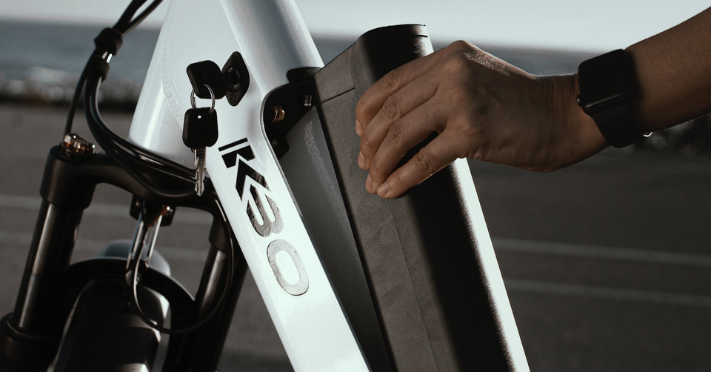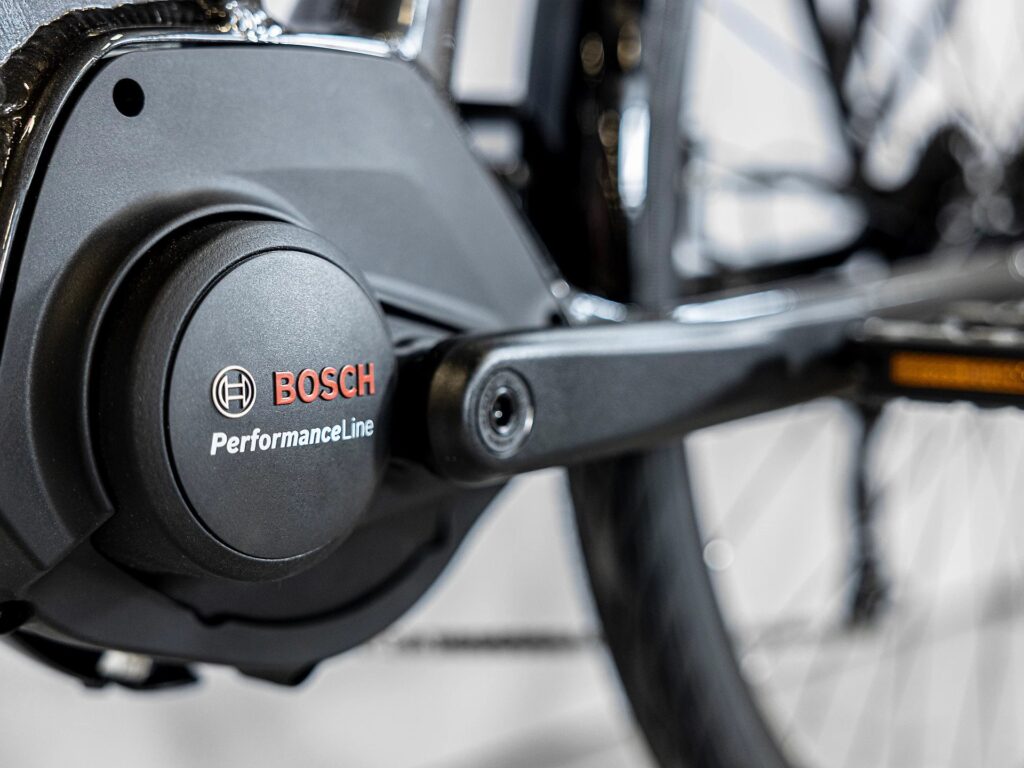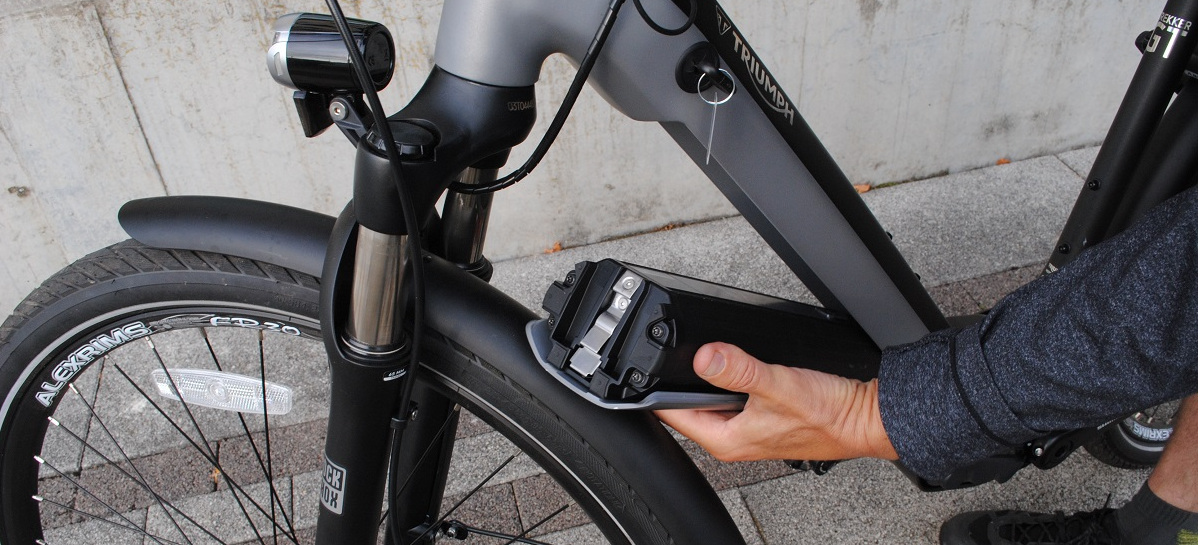Hey there, E-Bike enthusiasts! In our “Advanced E-Bike Riding Tips” section, we’re here to take your riding skills to the next level and dive into the technical aspects of e-biking. This article focuses specifically on advanced battery management for long rides. For intermediate to advanced riders who are serious about e-biking, this information is a must-have. Whether you’re into commuting, touring, or engaging in extreme e-biking activities, understanding how to optimize your battery’s performance and longevity is crucial. So, let’s delve into the intricacies of advanced e-bike battery management for those unforgettable, extended rides.
Understanding E-Bike Battery Technology
Lithium-Ion Batteries
When it comes to e-bike battery technology, lithium-ion batteries are the current industry standard. These batteries are known for their high energy density, meaning they can store a lot of energy in a relatively small and lightweight package. This is crucial for e-bike riders who want to go on long rides without the added weight and bulk of a larger battery.
Battery Capacity and Range
Battery capacity refers to the amount of energy a battery can hold, and it is typically measured in watt-hours (Wh). The higher the battery capacity, the longer the range of your e-bike. So, if you’re planning on going on long rides, it’s important to choose a battery with a high capacity to ensure that you don’t run out of power in the middle of your journey.
Voltage and Amp-Hour Ratings
Voltage and amp-hour ratings are also important considerations when choosing an e-bike battery. Voltage determines the power output of the battery, while amp-hour ratings indicate the battery’s capacity to deliver a certain amount of current over a specific period of time. These ratings work together to determine the overall performance and range of your e-bike.
Battery Management Systems
Battery management systems (BMS) play a crucial role in ensuring the safety and longevity of your e-bike battery. These systems monitor the battery’s voltage, temperature, and charging/discharging cycles to prevent overcharging, over-discharging, and overheating. Investing in a high-quality e-bike with a reliable BMS can help you maximize the lifespan of your battery and ensure optimal performance.
Factors Affecting Battery Life
Riding Speed and Assistance Level
The speed at which you ride and the level of assistance you require from your e-bike can significantly impact the battery life. Riding at higher speeds and relying heavily on the motor for assistance will drain the battery faster. To optimize battery life, it’s advisable to find a balance between pedaling and motor assistance, especially during long rides.
Terrain and Elevation Changes
Riding on hilly terrains or encountering frequent elevation changes can also have an impact on your battery life. Uphill climbs require more power from the motor, which in turn puts more strain on the battery. Similarly, riding downhill might trigger regenerative braking, which can help recharge the battery to some extent. Understanding the topography of your route and adjusting your riding style accordingly can help optimize battery performance.
Temperature and Weather Conditions
Extreme temperatures, both hot and cold, can affect the performance and lifespan of your e-bike battery. In extremely cold weather, the battery might struggle to deliver optimal power, while in extremely hot weather, it might overheat. It’s important to be mindful of the weather conditions and take appropriate measures to protect and optimize your battery, such as storing it in a temperature-controlled environment or using insulation covers.
Charging and Storage Practices
How you charge and store your e-bike battery also plays a role in its overall lifespan and performance. It’s essential to follow the manufacturer’s guidelines for charging, such as using the recommended charger and avoiding overcharging. Additionally, storing the battery at the appropriate temperature and checking its charge levels periodically during storage can prevent degradation and ensure the battery is ready for long rides.

Optimizing Battery Performance
Proper Charging Techniques
To optimize the performance and lifespan of your e-bike battery, it’s crucial to follow proper charging techniques. This includes using the recommended charger provided by the manufacturer and avoiding overcharging or undercharging the battery. Overcharging can lead to battery degradation, while undercharging can result in reduced range and power output. It’s best to maintain a regular charging routine and avoid letting the battery sit at extremely low charge levels for extended periods.
Prolonging Battery Life
There are several strategies you can implement to prolong the life of your e-bike battery. One important factor is avoiding deep discharges whenever possible. It’s generally recommended to recharge the battery before it reaches extremely low levels, as deep discharges can put additional strain on the battery and reduce its lifespan. Additionally, storing the battery properly and avoiding exposure to extreme temperatures can help prevent premature degradation.
Avoiding Overheating
Overheating is one of the common issues that can negatively impact battery performance and lifespan. To avoid overheating, it’s important to monitor the temperature of the battery during and after rides. If you notice that the battery is getting excessively hot, it’s a good idea to reduce the level of motor assistance or take a break to allow the battery to cool down. Additionally, avoid leaving your e-bike in direct sunlight for prolonged periods, as this can also lead to overheating.
Minimizing Energy Loss
Minimizing energy loss during rides is another way to optimize your e-bike battery’s performance. This can be achieved by adopting efficient riding habits, such as maintaining a steady and consistent speed, avoiding sudden acceleration or braking, and using lower motor assistance levels whenever possible. By being mindful of your riding style, you can maximize the range of your battery and ensure that you make the most of every charge.
Choosing the Right Battery for Long Rides
High-Capacity Batteries
If you’re planning on going on long rides, investing in a high-capacity battery is crucial. High-capacity batteries have larger storage capacities, allowing you to cover more distance without worrying about running out of power. These batteries are particularly beneficial for riders who frequently ride long distances or participate in endurance events. However, it’s important to consider the added weight and bulk of high-capacity batteries, as they can affect the overall handling and maneuverability of your e-bike.
Compact and Lightweight Options
For riders who prioritize portability and maneuverability, compact and lightweight battery options are worth considering. These batteries may have slightly lower capacities compared to their larger counterparts, but they offer the advantage of reduced weight and bulk. This can be particularly beneficial for riders who frequently need to transport their e-bikes or navigate tight spaces. It’s all about finding the right balance between capacity and convenience to suit your specific riding needs.
Compatibility with E-Bike Models
When choosing an e-bike battery for long rides, it’s important to ensure compatibility with your specific e-bike model. Different e-bike models may have different battery requirements in terms of voltage, amp-hour ratings, and physical dimensions. It’s always best to consult the manufacturer’s specifications or seek expert advice to ensure that the battery you choose is fully compatible with your e-bike. This will help ensure optimal performance and avoid any potential issues or malfunctions.
Considering the Riding Style
Lastly, when choosing an e-bike battery for long rides, it’s essential to consider your preferred riding style. Some riders may prioritize speed and require a battery with higher power output, while others may prioritize endurance and require a battery with higher capacity. Understanding your riding style and the demands it places on the battery will help you make an informed decision and choose the right battery for your long rides.

Planning for Battery Usage on Long Rides
Estimating Range and Battery Life
Before embarking on a long ride, it’s important to estimate the range and battery life you can expect from your e-bike. Factors such as battery capacity, riding style, terrain, and assistance levels all come into play. By considering these factors and doing some calculations, you can get a rough idea of how far your e-bike can go on a single charge. This will help you plan your route and ensure you have enough power to reach your destination without any issues.
Developing a Riding Strategy
Having a well-thought-out riding strategy can significantly impact your battery usage on long rides. By strategically utilizing the motor assistance and adjusting your pedaling efforts, you can optimize your battery’s performance. For example, you may choose to rely more on your pedaling during flat sections to conserve battery power and save the motor assistance for uphill climbs or when you need an extra boost of speed. Tailoring your riding strategy to your battery’s capabilities can help you go the distance without worrying about running out of power.
Managing Power Levels
During long rides, it’s important to keep an eye on your power levels and manage them effectively. Many e-bike displays provide real-time information on battery life and power output. By monitoring this information, you can make informed decisions about when to adjust your riding style, increase or decrease the level of motor assistance, or take a break to recharge if necessary. Being aware of your power levels throughout the ride will help you make smart decisions to ensure a smooth and enjoyable journey.
Back-up Charging Options
In case of emergencies or unexpected circumstances, it’s always a good idea to have back-up charging options available. This could be a portable charger that you can carry with you or knowing the locations of charging stations along your route. Having a back-up plan will provide you with peace of mind, knowing that you have options if your battery starts running low. It’s always better to be prepared than to be stranded without power.
Monitoring Battery Health and Performance
Using Battery Management Apps
Battery management apps can be a valuable tool for monitoring and optimizing your e-bike battery’s health and performance. These apps connect to your e-bike’s battery system and provide real-time information on battery life, power output, and other relevant parameters. They often offer features such as trip logging, battery diagnostics, and charging reminders. By utilizing these apps, you can stay on top of your battery’s performance and ensure that it remains in optimal condition for your long rides.
Tracking Usage and Efficiency
Tracking your battery usage and efficiency can help you identify any areas for improvement and make adjustments accordingly. This can be done by keeping a log of your rides, including distance covered, average speed, and battery consumption. By analyzing this data, you may discover patterns or trends that can guide you in optimizing your riding strategy or identifying any irregularities with your battery’s performance. Regularly tracking your battery usage will help you make the necessary adjustments to enhance your overall riding experience.
Identifying Signs of Degradation
Over time, e-bike batteries may experience some level of degradation, resulting in reduced capacity and performance. By familiarizing yourself with the signs of battery degradation, such as decreased range, increased charging times, or sudden drops in power output, you can take proactive measures to address the issue. Early detection and intervention can help prolong the battery’s lifespan and ensure that it continues to meet your long ride needs.
Regular Maintenance and Inspections
Regular maintenance and inspections are crucial for keeping your e-bike battery in optimal condition. This includes checking for any physical damage, ensuring proper connections, and cleaning the battery contacts. It’s also important to follow the manufacturer’s guidelines for maintenance, such as recommended cleaning solutions and intervals for full discharge and recharge cycles. By prioritizing regular maintenance, you can prevent potential issues and ensure that your battery is always ready for your long rides.

Maximizing Battery Efficiency during the Ride
Optimal Pedal-Assist Levels
Finding the optimal pedal-assist levels for your long rides can greatly impact your battery efficiency. Experiment with different levels of assistance and observe how they affect your overall riding experience. Sometimes, a lower level of assistance might be sufficient for your needs, allowing the battery to last longer. It’s all about finding the right balance between using the motor’s assistance and your own pedaling power to make the most efficient use of your battery’s energy.
Regenerative Braking Techniques
Some e-bike models are equipped with regenerative braking technology, which can help recharge the battery while riding. By utilizing regenerative braking techniques, such as gradually applying the brakes instead of fully engaging them, you can capture and store energy that would otherwise be lost as heat. This can provide a small but valuable boost to your battery’s charge, especially during long rides with frequent braking.
Efficient Riding Habits
Adopting efficient riding habits can make a significant difference in maximizing your battery efficiency. This includes maintaining a steady and consistent speed, avoiding unnecessary acceleration or braking, and anticipating the road ahead to minimize sudden changes in speed or direction. By being mindful of your riding habits, you can minimize energy waste and ensure that your battery lasts longer during your long rides.
Utilizing Power Modes
Many e-bikes offer different power modes that allow you to adjust the level of motor assistance according to your needs. During long rides, it’s worth exploring different power modes and selecting the one that strikes the right balance between power output and battery efficiency. Lower power modes will conserve energy, while higher power modes will provide more assistance but drain the battery faster. Experimenting with different power modes during your training rides can help you determine which mode suits your long ride requirements best.
Emergency Situations and Battery Management
Dealing with Low Battery Levels
In case you find yourself with a low battery during a long ride, there are some strategies you can employ to manage the situation. First and foremost, it’s important to carefully assess the remaining range and prioritize using the remaining battery power efficiently. This might involve adjusting your riding style, reducing the level of motor assistance, or even turning off the motor entirely and relying solely on your own pedaling power. Additionally, knowing the location of nearby charging stations or having a portable charger on hand can help in emergency situations where you need a quick recharge.
Extending Range in Critical Situations
If you find yourself in a critical situation where the battery is almost depleted, and there are no charging options available, there are some tactics you can employ to extend your range. One option is to ride at a slower pace or in a lower power mode to conserve energy. Another option is to draft behind other riders or vehicles to reduce wind resistance and minimize energy expenditure. It’s important to remember that these tactics should only be used in emergency situations and should not compromise your safety or violate any traffic laws.
Emergency Charging Options
Having emergency charging options available can provide peace of mind during long rides. Portable chargers or power banks specifically designed for e-bikes can offer a quick and convenient way to recharge your battery when needed. These chargers are usually lightweight and compact, making them easy to carry and store in your backpack or saddlebag. They can provide an additional power boost to get you through your ride or serve as a temporary solution until you can reach a proper charging station.
Safety Measures for Battery Failure
While rare, battery failure can occur, and it’s important to be prepared for such situations. If you experience a complete battery failure during a long ride, your e-bike will essentially become a traditional bicycle, relying solely on your pedaling power. It’s important to ride at a safe and manageable pace and adjust your route if necessary to avoid any challenging terrain that might be difficult to tackle without motor assistance. If possible, seek assistance from other riders or contact a reliable support team for help.

Solving Common Battery Issues
Troubleshooting Battery Problems
In the event of battery problems during a long ride, it’s essential to troubleshoot the issue to identify the underlying cause. Common battery problems can include sudden power loss, erratic behavior, or failure to charge. Start by checking the battery connections to ensure they are secure and clean. If the issue persists, consult the manufacturer’s troubleshooting guide or seek assistance from a professional e-bike technician. It’s important to handle any battery-related issues with caution to prevent further damage or safety risks.
Identifying Faulty Components
If you suspect that a specific component of your e-bike battery system is faulty, it’s important to identify the problem area for appropriate repairs or replacements. This can involve conducting voltage tests, inspecting connectors and wiring, or seeking professional diagnostic services. Identifying faulty components accurately will help ensure that the issue is addressed effectively, minimizing downtime and maximizing your e-bike’s performance during long rides.
Replacing or Upgrading Batteries
Over time, e-bike batteries may reach the end of their lifespan or require upgrading due to changing needs or advancements in battery technology. When replacing or upgrading your battery, it’s important to consider factors such as compatibility with your e-bike model, capacity requirements, and budget. Working with a reputable e-bike dealer or technician can help you navigate the options and make an informed decision that aligns with your long ride aspirations.
Addressing Battery Error Codes
Modern e-bike batteries often come equipped with error code systems that can provide valuable insights into potential issues. If you encounter a battery error code during a long ride, it’s important to consult the manufacturer’s manual or online resources to understand the meaning and potential solutions. Error codes can indicate issues such as overcharging, over-discharging, or a faulty BMS. Taking appropriate actions based on the error code information can help resolve the problem and ensure a safe ride.
Conclusion
Advanced e-bike battery management is essential for long rides, providing riders with the knowledge and strategies to optimize battery performance and ensure a smooth and enjoyable journey. By understanding the intricacies of lithium-ion batteries, considering factors that affect battery life, and implementing best practices for battery maintenance and usage, riders can confidently embark on long rides knowing that their e-bike’s battery will reliably power them to their destination. Additionally, being prepared for emergencies and equipped with the necessary knowledge and resources to address battery issues can provide peace of mind and enhance the overall riding experience. So, get out there, explore new horizons, and let your e-bike battery be your trusted companion on your long ride adventures!




